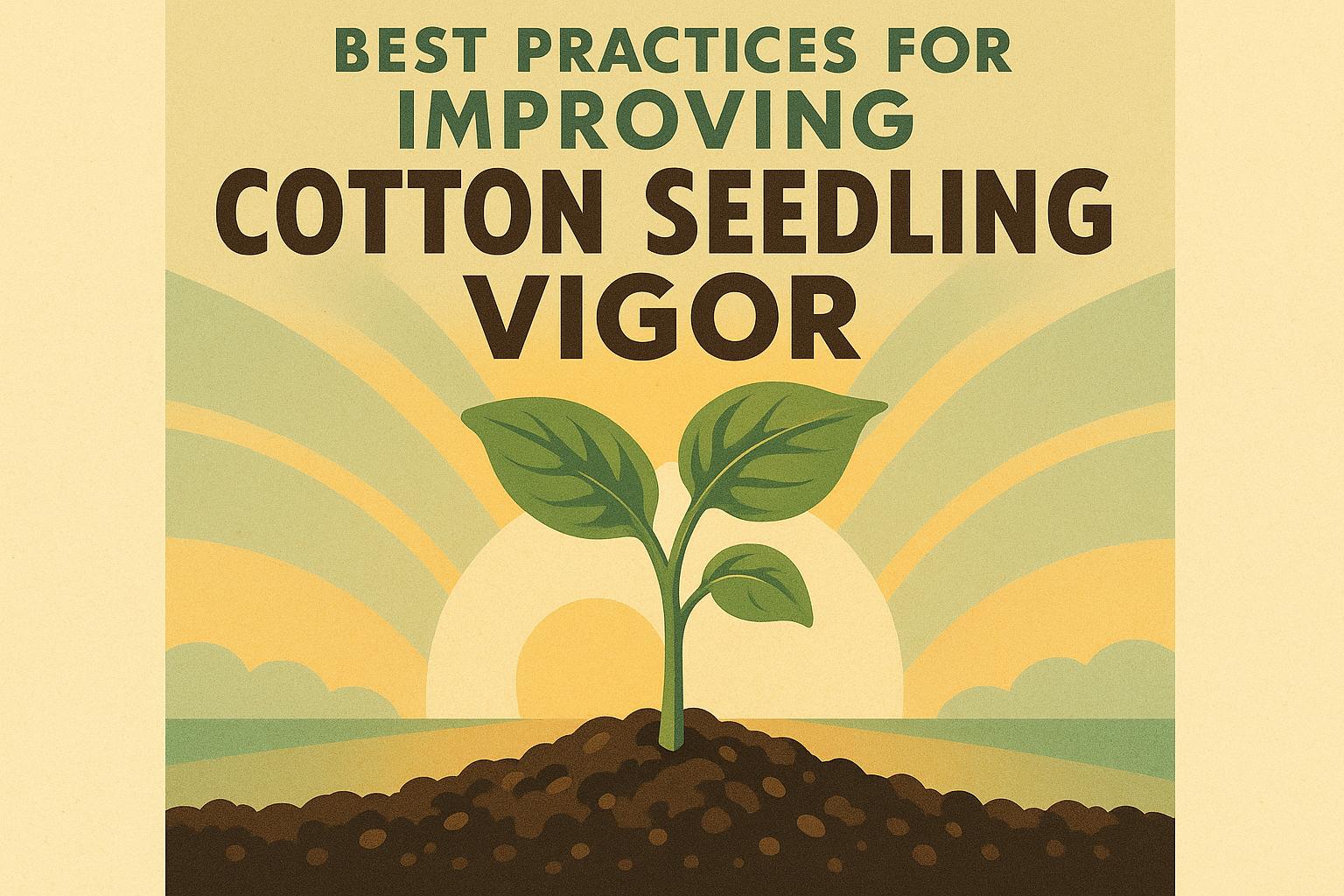Nutrient management is a critical component of cotton production, directly influencing plant health, boll development, and overall fiber quality. For seasoned cotton farmers, fine-tuning fertilization practices can mean the difference between average yields and exceptional ones, while also reducing costs and environmental impact. Healthy cotton plants require a balanced supply of macronutrients and micronutrients to support vigorous growth, resist stresses, and produce uniform lint. Over-fertilization leads to runoff, soil degradation, and unnecessary expenses, whereas deficiencies can stunt growth and lower market value. This comprehensive guide explores effective strategies for assessing soil needs, selecting fertilizers, timing applications, and adopting sustainable methods to optimize nutrient uptake. By integrating these approaches, growers can achieve consistent yields exceeding 1,500 pounds per acre in well-managed fields, fostering long-term soil vitality across diverse regions like the Southeast or High Plains.
Assessing Soil Nutrient Needs: The Role of Testing and Analysis
Effective nutrient management begins with understanding your soil's baseline fertility. Regular soil testing—ideally every one to three years—provides insights into pH, organic matter, and available nutrients, allowing for precise amendments. Cotton thrives in slightly acidic to neutral soils with a pH range of 5.8 to 8.0, but optimal growth occurs between 6.0 and 6.5, where nutrient availability is maximized. Low pH can lock up phosphorus and micronutrients, while high pH may limit iron and manganese uptake. Sample soils to a depth of 6 inches for most nutrients, but go deeper—up to 24 inches—for nitrogen profiling in irrigated systems.
Key tests should evaluate macronutrients like nitrogen (N), phosphorus (P), and potassium (K), as well as secondary elements such as sulfur (S), calcium (Ca), and magnesium (Mg). Micronutrients including zinc (Zn), boron (B), iron (Fe), and manganese (Mn) are often deficient in sandy or high-pH soils common in cotton belts. Interpret results against yield goals: For every bale of lint, cotton typically removes about 32 pounds of N, 14 pounds of P2O5, and 25 pounds of K2O from the soil. Adjust recommendations based on soil type—light-textured soils may need 50-60 pounds of N per bale, while heavier clays require 60-70 pounds. Incorporate tissue sampling during peak growth stages to monitor in-season deficiencies, ensuring proactive corrections before symptoms like yellowing leaves or reduced boll set appear.
Key Macronutrients: Nitrogen, Phosphorus, and Potassium
Nitrogen is the powerhouse nutrient for cotton, driving vegetative growth, boll formation, and protein synthesis. Deficiencies manifest as pale leaves and stunted plants, while excesses promote rank growth, delaying maturity and increasing pest susceptibility. Base rates on realistic yield expectations: 50-80 pounds per acre for rainfed crops, increasing by 20-25% under irrigation. Sources like urea ammonium nitrate (32-0-0) are ideal for liquid applications in pivot or drip systems. Split applications—30% pre-plant and the rest sidedressed at squaring—to match crop demand and minimize leaching.
Phosphorus supports root development and energy transfer, crucial for early establishment and boll fill. Cotton needs 20-40 pounds of P2O5 per acre, applied pre-plant in bands near the seed row for efficiency on low-P soils. Potassium enhances water use efficiency, disease resistance, and fiber quality, with requirements around 60-100 pounds of K2O per acre. Deficiencies cause leaf scorching and weak stems; broadcast or band applications work best, especially in potassium-fixing clays.
Here's a table outlining typical nutrient removal rates and application guidelines for cotton:
| Nutrient | Removal per Bale (lbs) | Recommended Rate (lbs/acre) | Application Timing | Common Sources |
|---|---|---|---|---|
| Nitrogen (N) | 32-35 | 50-80 (rainfed); 60-100 (irrigated) | Split: Pre-plant (30%), sidedress at squaring | Urea, UAN, ammonium nitrate |
| Phosphorus (P2O5) | 12-15 | 20-60 | Pre-plant banding | Triple superphosphate, DAP |
| Potassium (K2O) | 20-25 | 60-120 | Pre-plant or sidedress | Potassium chloride, sulfate of potash |
| Sulfur (S) | 3-5 | 10-20 | Pre-plant or foliar | Ammonium sulfate, gypsum |
| Boron (B) | 0.02-0.04 | 0.5-1 | Foliar at bloom | Borax, solubor |
These rates assume moderate soil fertility; adjust based on tests to avoid over-application.
Micronutrients and Secondary Nutrients: Addressing Hidden Deficiencies
While macronutrients get the spotlight, micronutrients are vital for enzyme functions and overall plant metabolism. Zinc deficiency, common in high-pH or sandy soils, causes bronzing and reduced internodes; apply 5-10 pounds per acre as zinc sulfate pre-plant or foliar. Boron supports pollination and boll retention—deficiencies lead to square shed; foliar applications of 0.5 pounds per acre during early bloom are most effective. Manganese and iron deficiencies appear as interveinal chlorosis; chelated forms ensure availability in alkaline conditions.
Secondary nutrients like sulfur aid in protein synthesis and chlorophyll formation. Apply 10-20 pounds per acre, especially in low-organic-matter soils, using gypsum or ammonium sulfate. Calcium and magnesium maintain cell structure; lime applications correct deficiencies while adjusting pH.
Application Methods and Timing for Maximum Efficiency
Method and timing directly impact nutrient utilization. Pre-plant broadcasting suits stable nutrients like P and K, while banding concentrates them near roots for early uptake, reducing rates by 20-30%. Fertigation through drip or pivot systems delivers N and micros precisely, minimizing losses in arid regions. Foliar feeding corrects mid-season deficiencies, but limit to low temperatures to avoid leaf burn.
Time applications to crop stages: Early N for establishment (first true leaf), peak during squaring to bloom for boll development. Avoid late N to prevent delayed maturity.
Sustainable Practices: Integrating Organic and Precision Approaches
Sustainability enhances long-term productivity. Incorporate organic fertilizers like manure or compost to build soil organic matter, improving nutrient cycling and reducing synthetic needs by 20-30%. Cover crops such as legumes fix N, potentially cutting rates by 30-50 pounds per acre. Precision agriculture—using GPS-guided variable-rate applicators—targets zones, cutting inputs by 10-15%. Rotate with non-host crops to break cycles and restore fertility.
Bio-fertilizers with beneficial microbes enhance uptake, particularly in organic systems. These practices minimize runoff, support biodiversity, and align with premium markets.
Overcoming Common Challenges in Nutrient Management
Challenges include variable weather, resistance, and costs. In drought, prioritize K for water efficiency; in wet conditions, split N to prevent leaching. Monitor for imbalances—excess N can exacerbate deficiencies in other elements. Budget wisely: Nutrient costs are 15-20% of inputs, but efficient management yields returns through higher grades.
Conclusion: Building a Resilient Nutrient Program
Mastering nutrient management empowers cotton farmers to sustain high yields while preserving soil health. By leveraging tests, balanced applications, and sustainable tactics, you can optimize every acre. For more on cotton production, explore our state histories. What's your biggest nutrient challenge?


